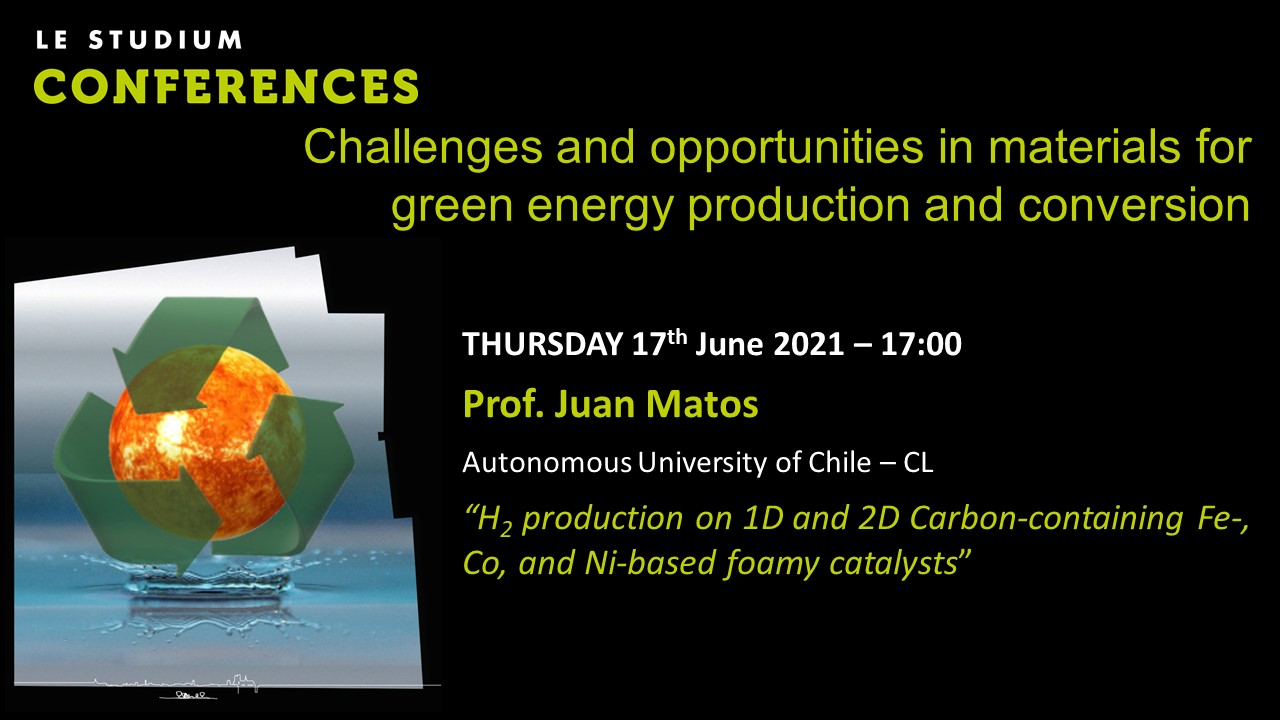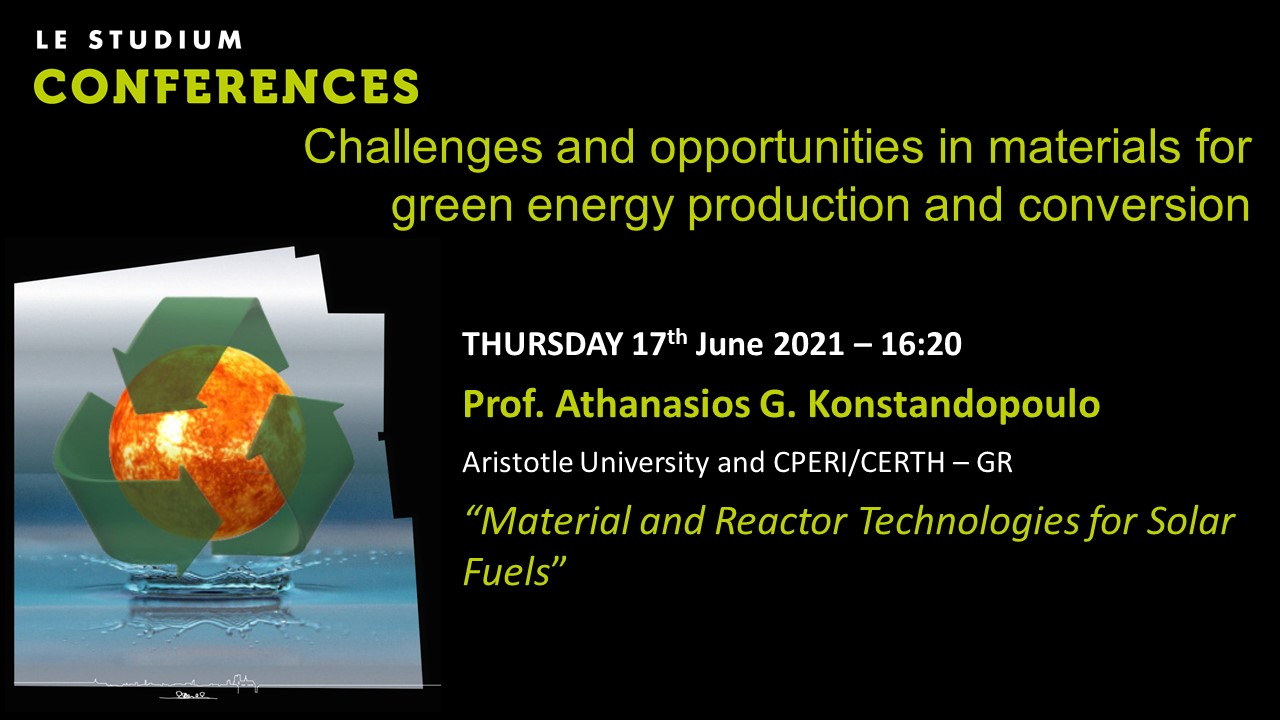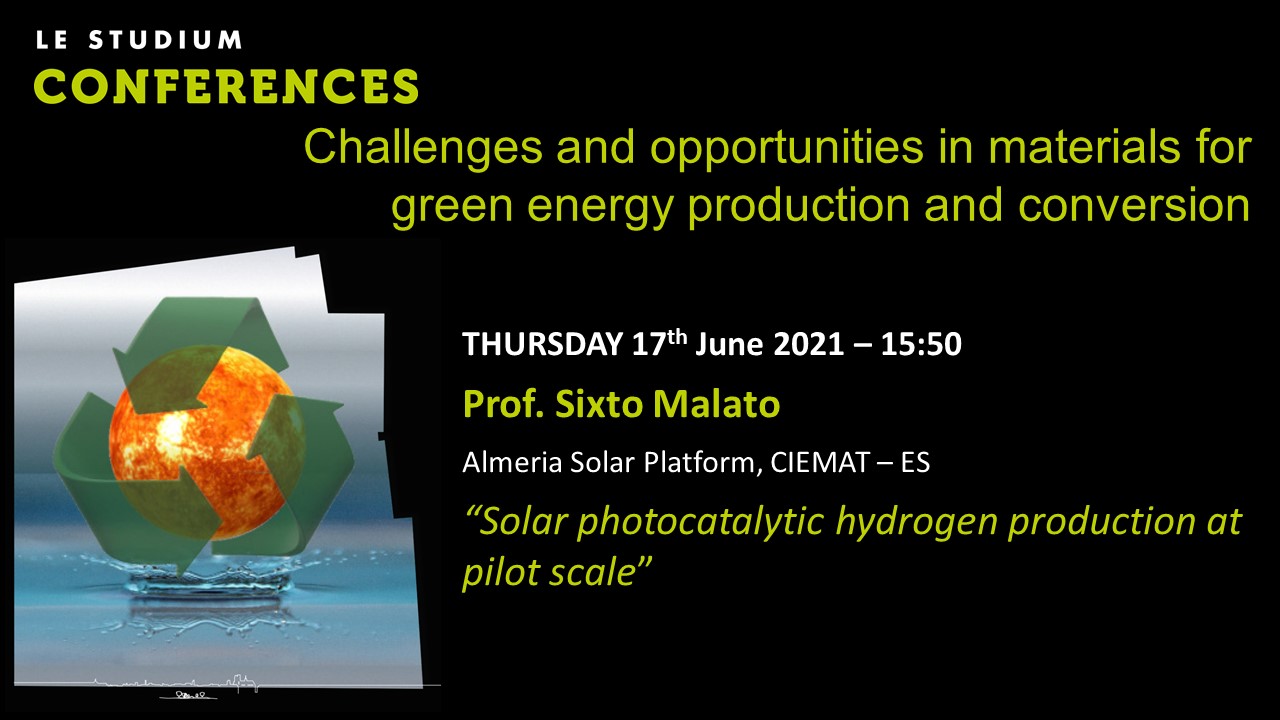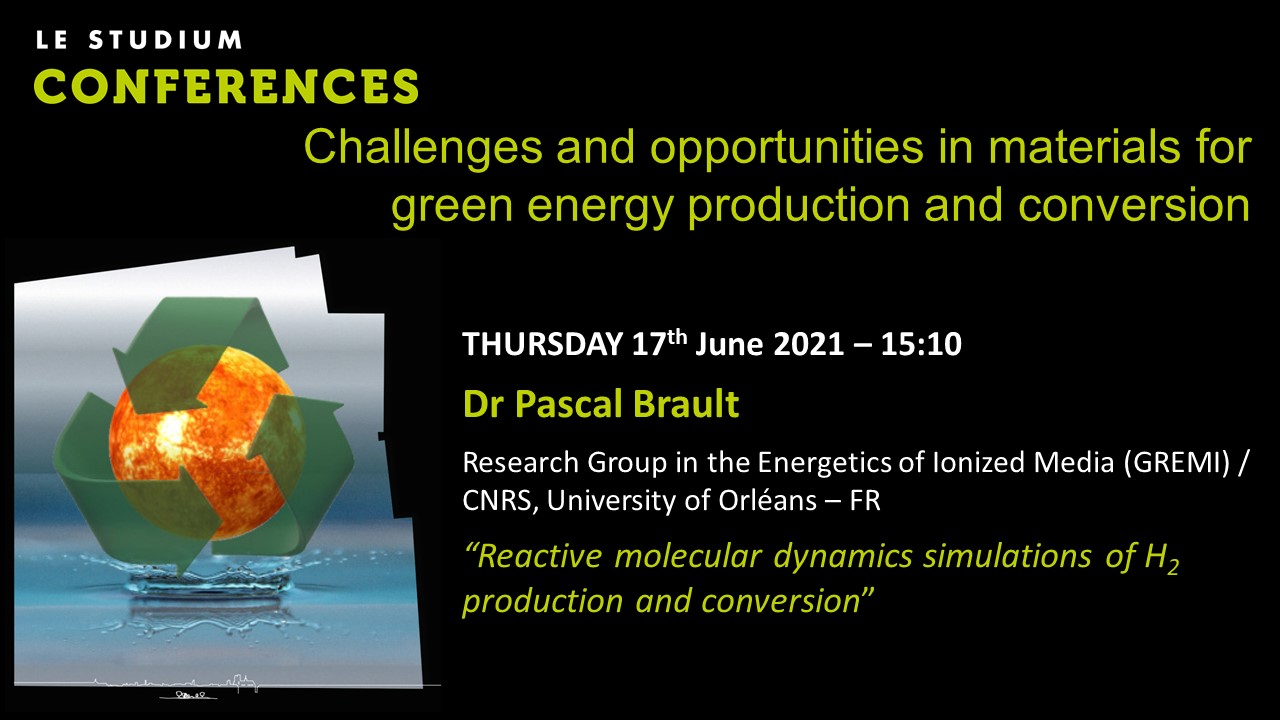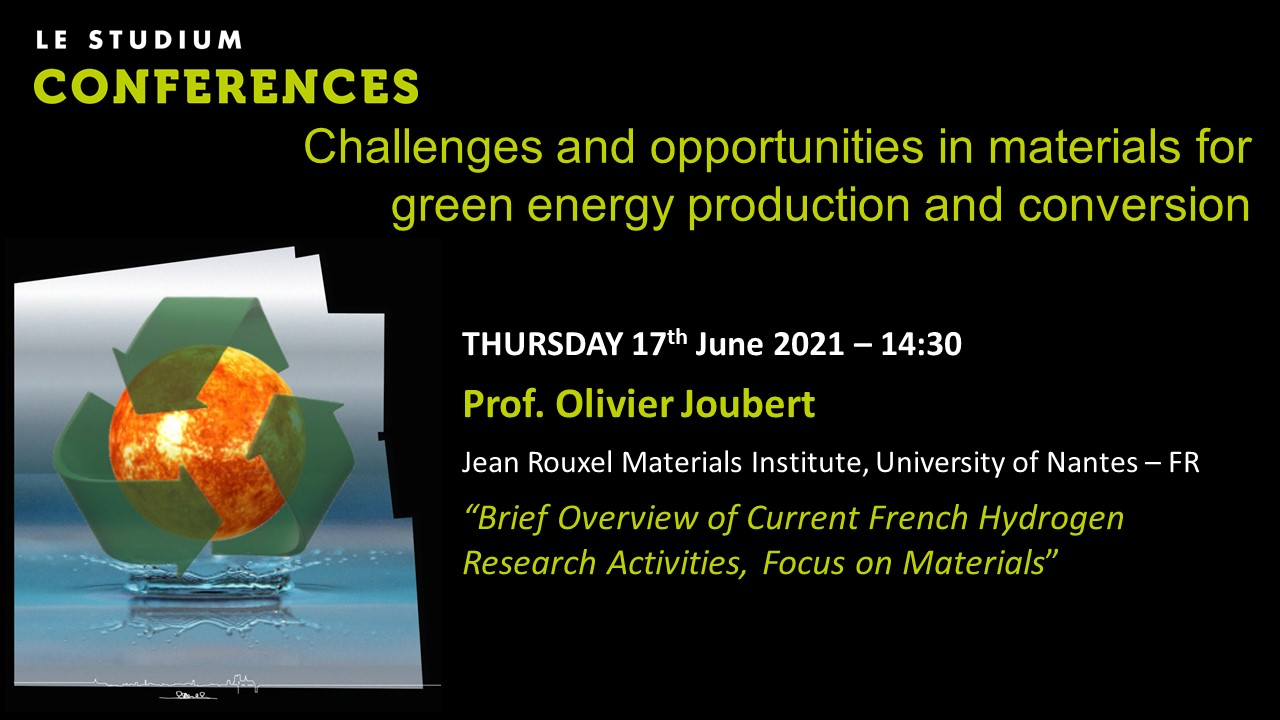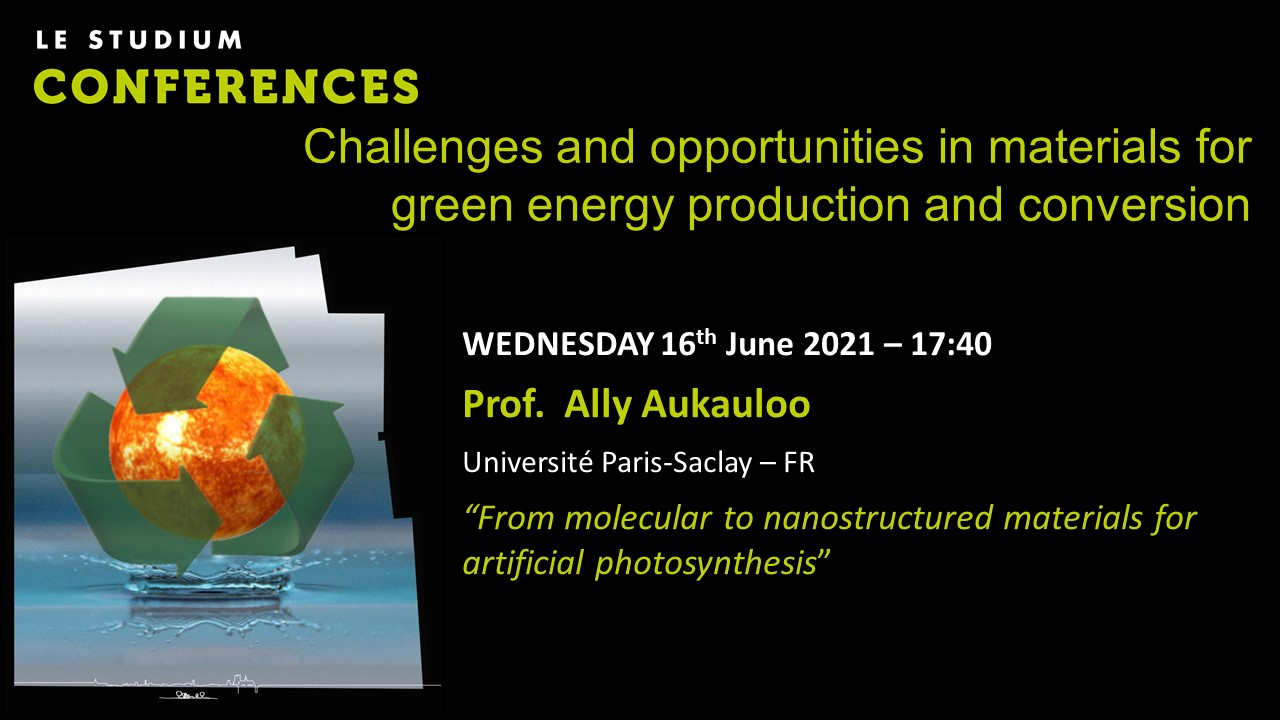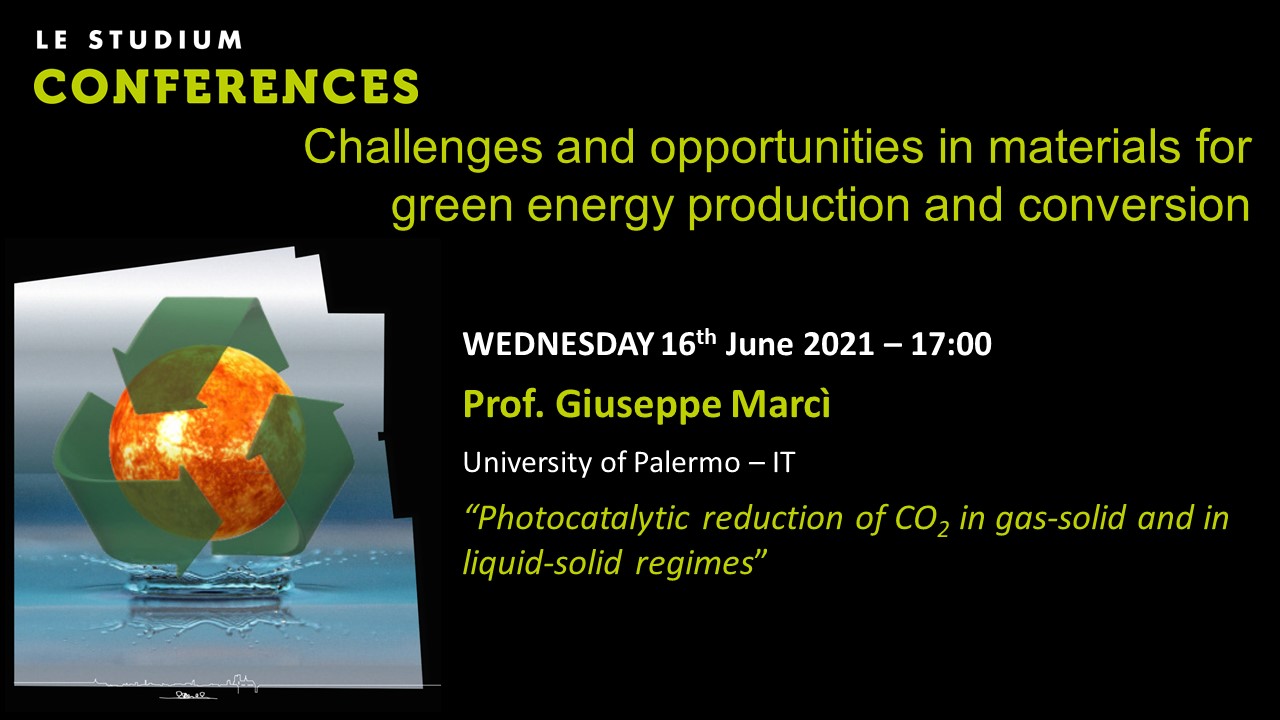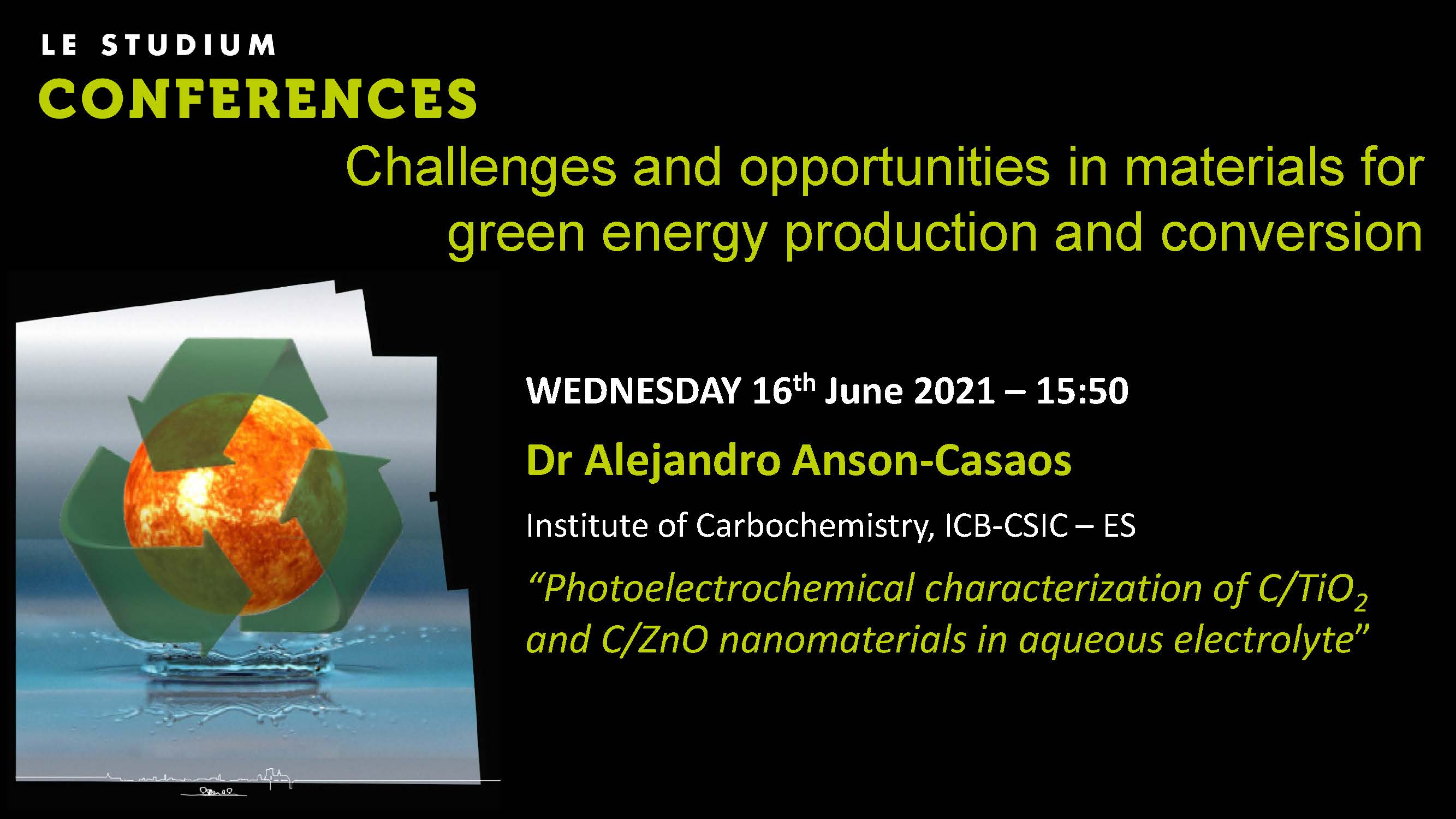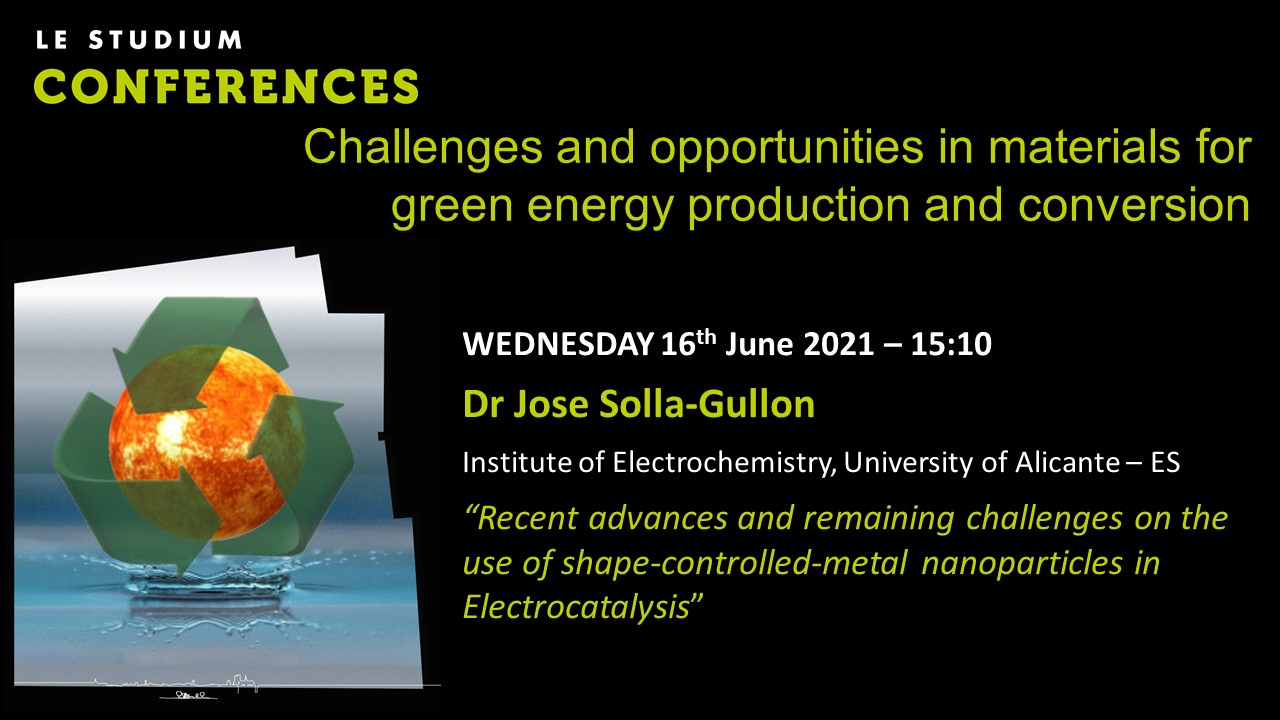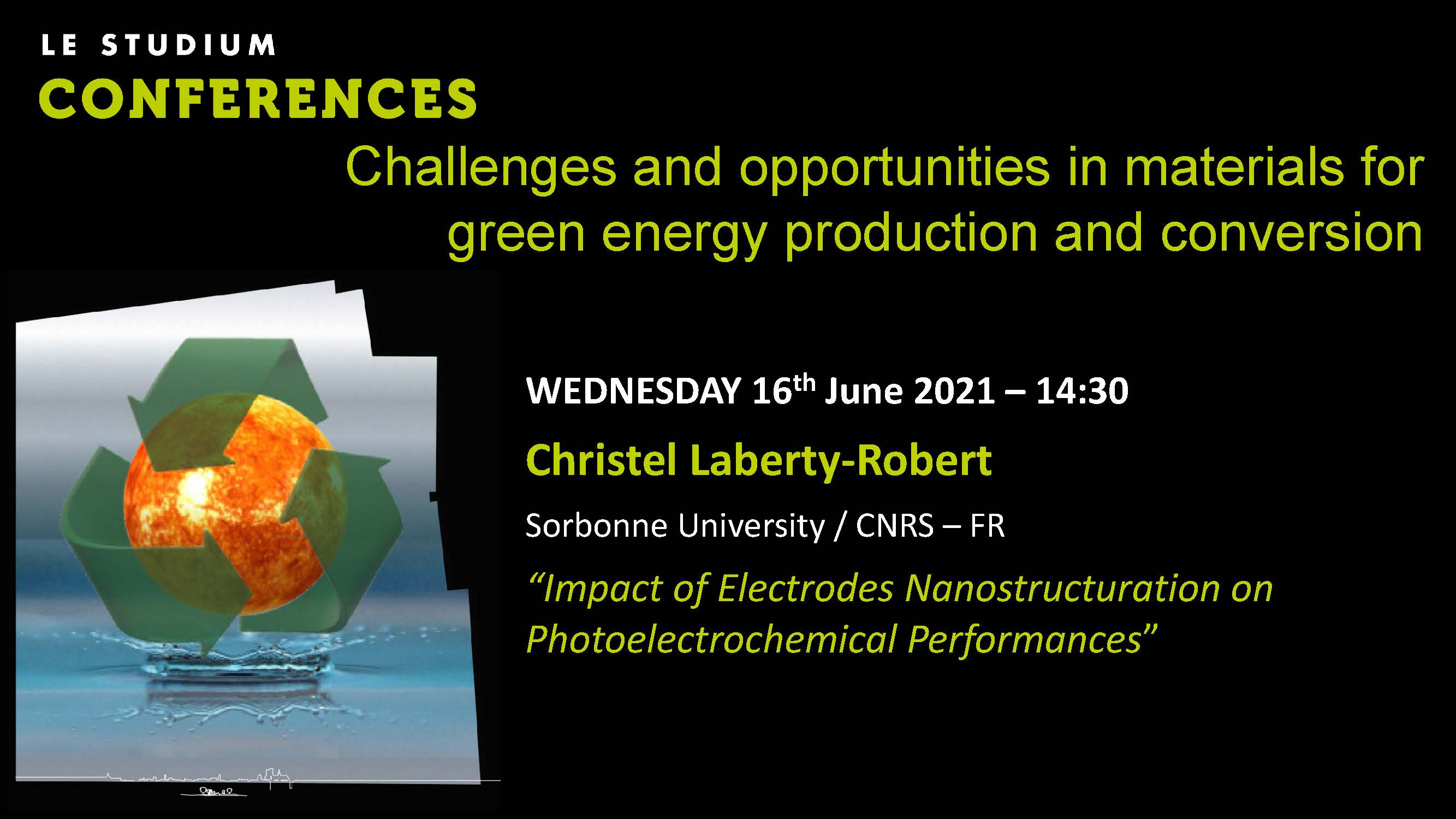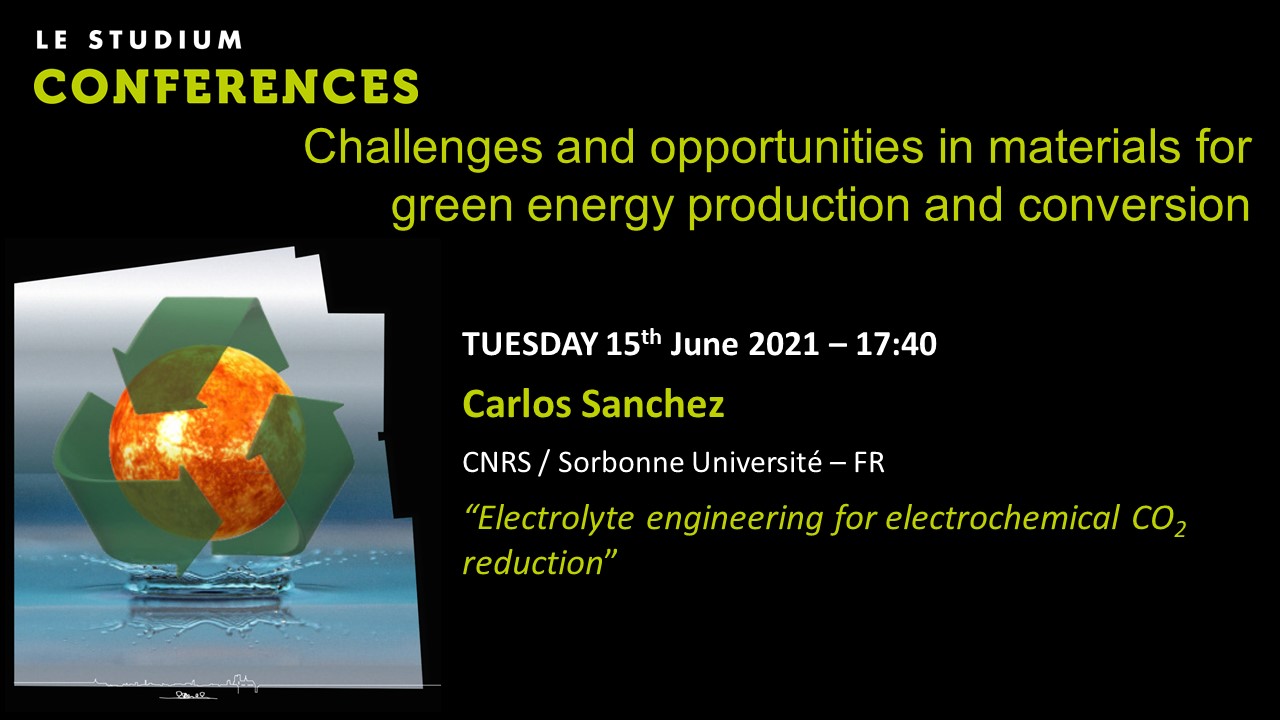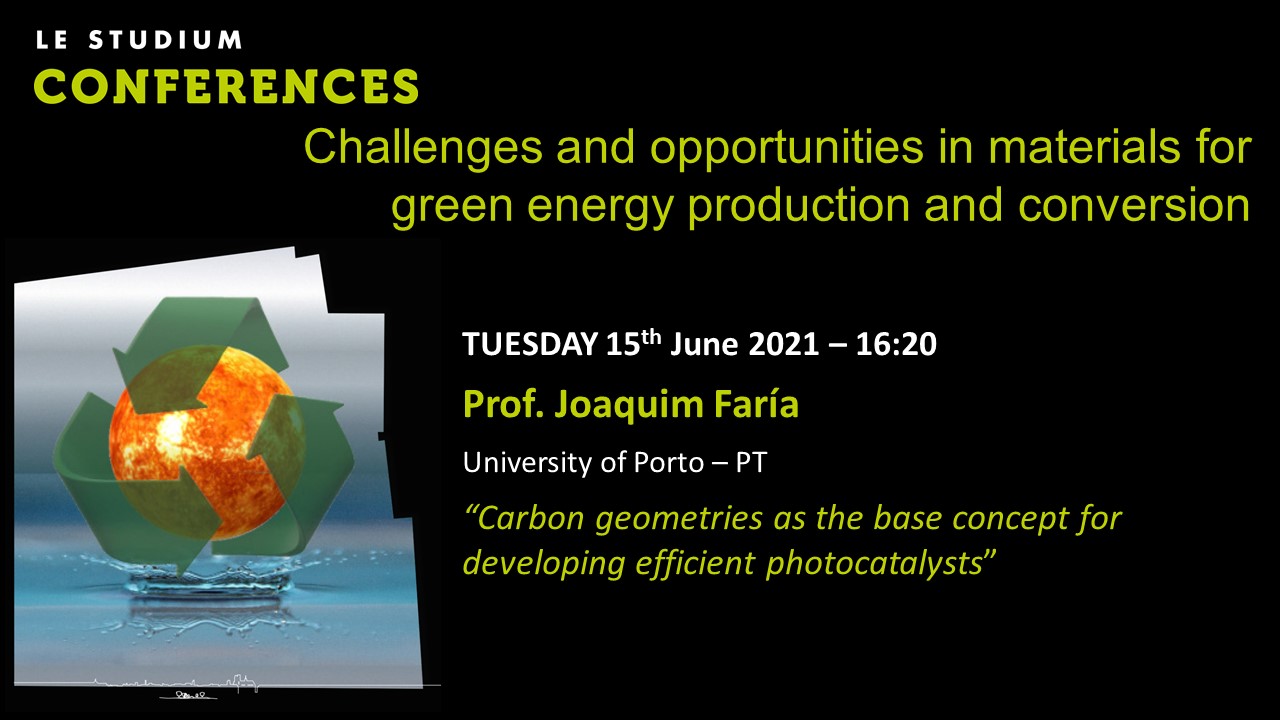Notice
Beatriz Avila - CO2 electroreduction to formate on Sn, Bi and Sb nanostructured electrodes: from fundamental studies to practical devices
- document 1 document 2 document 3
- niveau 1 niveau 2 niveau 3
Descriptif
The electrochemical reduction of CO2into chemical products of interest has been considered as an interesting routenot only to mitigate climate change but also to store renewable energy in theform of value-added chemicals. Among other possible chemicals, formic acid(HCOOH) or formate (HCOO−) (depending on pH value) is one of themost attractive carbon-based products due to its potential uses and its highworld demand including its use as a fuel for low-temperature fuel cells and asa renewable hydrogen carrier molecule. In this contribution, we will summarizeour most recent and relevant results on the use of Tin (Sn), Bismuth (Bi), andAntimony (Sb) nanostructured based electrocatalysts for the selectiveconversion of CO2 into formic acid/ formate. This summary will coverfrom fundamental studies, including the synthesis, characterization andelectrochemical behaviour of these nanostructured materials on conventionalH-type electrochemical cells, to practical applications, focused on thedevelopment and testing of a process for the electrocatalytic reduction of CO2to formate (HCOO−) operating in a continuous way, with differentelectrochemical reactor configurations, such as Gas Diffusion Electrodes (GDE),or Catalyst Coated Membrane Electrodes (CCME), and under different operatingconditions. The results obtained will demonstrate the potentialities of thiselectrochemical technology for the valorisation of CO2 into formicacid/ formate.
Dans la même collection
-
Juan Matos - H2 production on 1D and 2D Carbon-containing Fe-, Co, and Ni-based foamy catalysts.
C-containing Fe-, Co-, and Ni-based catalysts have been synthesized from the controlled pyrolysis of saccharose. The topological properties of the 2D materials were significantly different from
-
Athanasios G. Konstandopoulos - Material and Reactor Technologies for Solar Fuels
The synthesis of carbon-neutral/zero-carbon footprint fuels via solar thermochemical processes (“Solar Fuels”) represents a promising approach for the realization of a sustainable energy future.
-
Sixto Malato - Solar photocatalytic hydrogen production at pilot scale
Solar energy is well-recognized as a sustainable and clean energy source. Among the various approaches to solar energy conversion, solar-driven hydrogen production is one of the most promising ways
-
Pascal Brault - Reactive molecular dynamics simulations of H2 production and conversion
Since H2 production and conversion efficiencies can be improved and monitored at the molecular scale, reactive molecular dynamics simulations (rMDS) are expected to be of great promise for
-
Olivier Joubert - Brief Overview of Current French Hydrogen Research Activities, Focus on Materials
Twenty years ago, the French scientific community working in the field of hydrogen, started to federate under the leadership of the CNRS. It took the form of successive Research Grouping (GdR)
-
Ally Aukaloo - From molecular to nanostructured materials for artificial photosynthesis
Inspired by chemical subtleties at the active sites of enzymes dealing with the CO2 management in our biosphere, we will discuss on how hydrogen bonding and electrostatic effects may thrive the
-
Giuseppe Marci - Photocatalytic reduction of CO2 in gas-solid and in liquid-solid regimes
The increasing CO2 level in the atmosphere is a global environmental problem; therefore, the development of efficient catalytic processes for CO2 reduction is a challenge. Heterogeneous photo
-
Alejandro Anson-Casaos - Photoelectrochemical characterization of C/TiO2 and C/ZnO nanomaterials in…
Carbon nanostructures, including single-walled carbon nanotubes, reduced graphene oxide, and carbon dots, are inserted in TiO2 and ZnO photoanodes with the aim of improving their activity. For the
-
José Solla-Gullon - Recent advances and remaining challenges on the use of shape-controlled-metal n…
The incorporation of shape-controlled metal nanoparticles in Electrocatalysis is contributing significantly to a better understanding of the correlations between surface structure and
-
Christel Laberty-Robert - Impact of Electrodes Nanostructuration on Photoelectrochemical Performanc…
Hydrogen is presented by some industrialists and managers as a potential pillar of the ecological transition, particularly in the context of transport (hydrogen-powered cars, hydrogen-powered
-
Carlos Sanchez - Electrolyte engineering for electrochemical CO2 reduction
Ionic liquids (ILs) in electrocatalysis have attracted a lot of attention from the seminal work of Rosen et al. [1] where they achieved a relevant overpotential decrease for CO2 reduction reaction
-
Joaquim Faria - Carbon geometries as the base concept for developing efficient photocatalysts
During the past several decades' new carbon allotropes have been accounted for and synthesised. Many notable breakthroughs include exciting works on synthesis, functionalisation, characterisation

